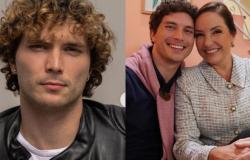At the heart of the photography of the Peruvian Milagros de la Torre beats a deep commitment to memory, a constant exploration of the past and its complexities. From his first solo exhibition in Paris in the nineties to his most recent projects … has woven a visual narrative that challenges, provokes and reveals the intersection between identity, history and violence in Latin America.
In a warm conversation with ABC from his home in New York, where he has lived for 20 years, De la Torre shared his journey from Lima to the Big Apple, revealing the threads that have woven his artistic career for more than three decades. «I left Lima very young, at 18 years old, because at that time there was no space specialized in what image was.»
His idea “was always to work with the image, with photography, and that is why I traveled from Lima to London, where I studied at the University of the Arts». Later he received a scholarship in Paris, and from there to Mexico. Ten years later, she became a mother, and decided to move to New York. «We came like all immigrants, with two suitcases: work in one, clothes in another. But “London is a very close place for me,” she admits, “and now my daughter is studying there too. And this has been in some way like a comeback.
De la Torre’s creation is nourished by his personal experience and his Family history, marked by his father, who was responsible for intelligence in Peru. «We lived prepared for the possibility of suffer violence because of their work», he reflected on his childhood. This early awareness of danger and political violence in the country would influence her artistic approach, turning her into a quiet and reflective observer from an early age.
«I realize from a very young age that as a result of my family circumstance, we lived a childhood very different from that of other people», in a «time when there was the Shining Path in Peru, different terrorist groups… From a very young age I was very observant, very quiet, she was a little behind observing everything that space is. That also strengthened the idea of always observing, always seeing, always analyzing. I was very interested in photography for the fact, even physical, of being behind a camera, of observe and focus on a frame a type of reality.
It was this sensitivity to pain and the complexity of the human experience that led De la Torre to embark on a journey of self-discovery through photography. He found inspiration in the streets of New York, where everyday life unfolded like an ever-evolving human drama. People, cityscapes, and fleeting moments became the subjects of his artistic exploration.
However, it was a trip back to his homeland that would mark a turning point in his career and shape his artistic approach indelibly. She met the ‘minute photographers’street artists who offered instant portraits using rudimentary developing techniques, an eye-opening experience that led him to question conventional notions of beauty, identity and power in Latin America.
‘Under the Black Sun’
This is how ‘Under the Black Sun’ was born. «I am very amazed by the technique of these photographers in the square. They had box cameras, with which they took the photo, in black and white, of the Cusco individual, who is an indigenous person with copper-brown skin. They take the photo directly on the photographic paper, develop it inside the camera and it turns out a small passport size negative that they take out into the air, they dry it very quickly with the very strong sun of Cusco and in a very automatic gesture that shocked me: with a brush and a little chrome mercury – which is this medicine used for cuts as a disinfectant, with a red dye –, they painted the face of the person photographed. Only the skin, not the eyes. They would dry it again and put this in front of the camera and rephotograph it. The result was, inside the chamber, the positive. That is, now the passport photo.
«What happened is that this red dye gave, once rephotographed, a lightening to the skin. And people, I don’t know if they were aware of this change in skin color, but they accepted their results as if to say: ‘Ah, I look good.’ That is, ‘I like the way I look or how the photographer makes me see». And they used these images for their documents. «I am shocked by this idea that the idea that you were going to look better with was in the hands of a photographer. White skin. With the skin of the colonizer, with the idea that if you are whiter, you are more handsome, you are more educated…» Then he decided to use the same technique, only leaving the process halfway, «with the image of the sitter in negative and with the medicine still covering his face», and thus proposing a reflection on «the idea of identity as colonized peoples after 500 years”, challenging perceptions of beauty and power.
The impact of ‘Under the Black Sun’ was immediate and lasting, establishing de la Torre as a singular voice in the world of contemporary photography. Since then, she has continued to explore themes of memory and violence in Latin America through a variety of projects, exhibitions and collaborations.
Political violence
The influence of his work spread, as evidenced by his series ‘The lost steps’, which focuses on incriminating objects used in court cases in Peru and examines the legacy of political violence in a country marked by impunity and oblivion. «I find these objects in the Palace of Justice, in an archive of objects that were presented as evidence during recognized cases or in trials with considerable repercussions. In Lima we felt a little closed to what the rest of the world was like. Violence was daily, it was a pretty raw time».
He requested access to the file. «I begin to work with these incriminating objects and propose a vision of them using the idea of the 19th century technique, when the development of the photographic lens did not fully cover what the camera’s vision was. That is to say, it focused only on the center and had this kind of circle or halo around it, and the rest went into darkness because the light did not enter. So I use this technique to propose a focused vision of what was happening to us. For example, if it is a knife used in a murder, the blade is what is in focus and the rest goes away, out… To the darkness, to that idea of history and spaces, of segments we don’t know».
Milagros de la Torre’s work continues to challenge and provoke, opening a dialogue about Latin American history that continues to resonate at the heart of her work. From the streets of Lima to the hallways of the most prestigious museums in the worldOr, he has traced a fascinating path about the complexity and richness of identity in the region that he experienced firsthand. Her work has been widely exhibited and is part of permanent collections in major museums around the world, including the Museum of Modern Art in New York, the Museum of Fine Arts in Houston, and the Museo Nacional Centro de Arte Reina Sofía in Madrid. . «I feel that all the series, all the works, are very close. With a lot of personal history in them and obviously with this much larger context that also resonates that is our public history, our general history,” she reflects.
In everything he does “there is always a lot of research, not only historical, but also of concepts, ideas, work to create the idea, the proposal, long before the image is taken.” «What I do is simply propose ideas and concepts and let them people interpret work, with a critical and personal view.
Her daughter has left home and is now in a new stage. “I’m doing a kind of general review of my career,” and also “thinking about the future.” image fracture, in artificial intelligence, in how our vision is going to change. But above all, “I am super impressed by how easy it is to get back to what you love, feeling like I did when I was 21 or 22 years old. Currently, I am working on the Smithsonian Artist Research Fellowship in Washington, which is an important fellowship for artists who include research and study in their creative methods,” he explains, detailing that “this is the largest complex of research, education and museography in the world. world, and they give scholarships to artists once they have been recommended by institutions or respected people in the art world, to propose a specific research project. I was recommended by Jorge Rivas, curator of the Denver Art Museum, and after making my study proposal I was selected.
According to sources from the center, “De la Torre will study the history of the visualization, manipulation and programming of the human face at the National Portrait Gallery,” where “through his research, he will explore the relationship between representations of the face and sociopolitical contexts.” that produce them.






